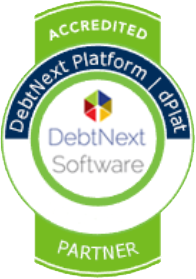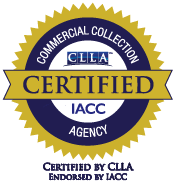The workforce and workplace future is flexibility
Today, as businesses reopen and take steps towards resuming “normal” operations, workers are hesitant to return to the office. After over a year of effectively working from home while avoiding long commutes, many workers wonder why their presence in a physical workplace is necessary. If their goals are being met and efficiencies haven’t declined, why not allow those who want to continue working remotely to do so?
This shift in mindset has made flexibility a key component for any business’s future success. Employers who are hesitant to allow ongoing remote work must realize that there are many benefits that both they and their employees can enjoy.
At Radius Global Solutions, helping businesses of all sizes remain flexible is what we do. With our innovative technology and knowledgeable agents, your business can be prepared for whatever happens next.
The post-COVID workforce
Many employers have seen positive trends as a direct result of remote work. Notably, it decreased attrition rates, reduced sick days, and uncovered better recruiting opportunities. Employees themselves enjoyed improved work-life balance, transportation savings, and increased job satisfaction.
But can these benefits continue after the pandemic fades? Many employees hope so. As the job market becomes more stable, people may opt to seek new employment if their current position doesn’t offer the flexibility they’ve come to expect. This is something companies should consider before requiring all employees to come back to the office full-time.
Allowing for this flexibility won’t just help your organization retain employees. A hybrid or fully remote workforce allows you to:
- Reduce or eliminate the cost of maintaining an office space
- Improve your preparedness for future unforeseen circumstances
- Expand your talent pool past your physical location
- Take advantage of better communication technology
Radius offers remote and in-person programs across multiple locations. We can shift our labor to accommodate the needs of our employees, our clients, and each state’s regulations. Use our innovative technology and adaptable workforce to take your business to the next level.
The post-COVID workplace
The way that workplaces are set up is changing as a direct result of the coronavirus pandemic. Some offices have closed entirely. Some have less desk space to account for social distancing or a hybrid workforce.

Pre-COVID, many workplaces were congested. Personal space could be difficult to come by, leading to an increased potential for sickness spreading. Side conversations and overall decreased productivity throughout the day were expected.
Even as more and more of the population become vaccinated, people are still wary about returning to the way the workplace was. The changing wants and needs of employers, employees, and customers are impacting the “return to work” and the new hybrid model.
Here are the changes you can expect:
- Remote meetings and virtual events are here to stay
The pandemic forced many businesses to adopt new technologies that would allow them to hold events virtually. Before long, attending events online became the norm. Attendees could participate in worldwide events for the first time without worrying about travel costs. Event hosts enjoyed increased ROI and improved attendance.
With these benefits, meetings, conferences, and other business events are projected to continue being held virtually post-pandemic. Make sure you’re staying up to date with the latest virtual event technologies to keep your business ahead of the curve.
- Technological capabilities are paramount
If you want to keep up with your employees’ needs, you need to stay up to date with the latest technology. In the workplace, technologies that facilitated seamless communication between internal teams helped keep businesses aligned while employees worked remotely. Since many businesses are continuing to work from home, this communication technology is necessary in order to avoid employees working in silos.
Shying away from innovation is a surefire way to lose important opportunities. And if another disaster strikes, having the best technology in place will help you and your employees quickly adapt.
- Adapting the hybrid model is key to retention
As previously mentioned, people are hesitant to return back to the typical work week. So much so that they are willing to quit if their employers insist that they have to be in the office five times a week. To keep your employees happy and avoid staff shortages, consider rolling out a hybrid workplace.
The best thing about a hybrid working environment is that it can be customized to suit your needs. Ask your staff how they prefer to work and incorporate their responses into a plan. You can put your employees on staggered schedules or ask them to only come in a few times per week. No matter how you adopt the hybrid model, doing so will help retain your employees.

How to leverage flexibility for success
Transitioning to a hybrid work environment will require time and open communication. Any changes have the potential to impact employers, employees, and customers. That’s why a solid strategy should be formed before you begin removing desks or shifting schedules:
Step one – Consider Company Culture
Gauge how your employees feel about working from home. You can find out how your employees feel by sending out a survey, having one-on-one conversations, or bringing it up at your next meeting. No matter what method you use, you have to know exactly what your employees want in order to make them happy.
Some may be eager to return to the office after a year of limited social interaction. Others may have discovered they work best from the comfort of their home. Regardless, there are benefits to both being in the office and working from home. So, it’s best to combine them to enjoy a synchronous, happy workplace.
Step two – Digitize Your Meetings
In the hybrid work model, some employees will be home while others operate in the office. Make sure to account for this when scheduling future meetings. Every meeting will need to be hosted via Zoom, Teams, or a similar service to include remote workers. Clear agendas should be set beforehand and included in meeting descriptions so that all employees have equal context. Doing so will reduce the chances of unproductive meetings occurring due to a lack of internal alignment.
Step three – Focus on Communication
Active communication between employers and employees is essential for any business. It helps to avoid conflict and keep all teams on the same page. When all employees are in the office, people can stop by one anothers’ desks throughout the day to follow up on tasks or ask questions. If half of your workforce is home, this option does not exist.
Make sure to encourage open and active communication between your in-office and work-from-home employees. Using messaging apps like Slack and Office Chat will encourage your team to quickly interact with one another in real-time. Any communication technology should be implemented before your workforce goes remote to avoid hiccups or miscommunication.
The future of hybrid workplaces is likely here to stay
Businesses must learn to navigate the future’s uncertainties by being agile and flexible. Mindsets about how and where to work have shifted dramatically ever since the start of the pandemic. If your business can’t keep up, you can’t expect your employees to stay.
This is why the hybrid culture will likely continue into the future. A company’s values are important to its employees and customers. These values should reflect the current state of the world and the ever-changing needs of the workforce.
Next steps to implement flexibility
Having the right technology in place will help ensure that your business can readily adapt to its environment and continue to succeed. Keep your business flexible by relying on our team of experts. We’ll listen to your business challenges and offer a BPO strategy that suits your needs.
At Radius Global Solutions, we work collaboratively with our clients to exceed their customers’ expectations within a highly secure and compliant environment. We attract the best people and empower them with next-generation technology in order to consistently deliver superior results. Reach out to Radius Global Solutions today to find out how we can help you implement a hybrid workplace strategy.



